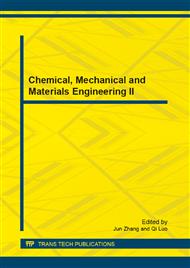p.58
p.62
p.66
p.73
p.79
p.84
p.90
p.96
p.102
Wear Mechanism of Si3N4/TiC Micro-Nano-Composite Ceramic Tool in Dry Machining of Nodular Cast Iron
Abstract:
In this paper, a type of Si3N4/TiC micro-nano-composite ceramic tool materials were fabricated via hot pressing technique by adding Si3N4 and TiC nanoparticles and with Al2O3 and Y2O3 as additives. Tool wear in dry machining of nodular cast iron with Si3N4/TiC micro-nano-composite ceramic tool were investigated, in comparison with a commercial Sialon ceramic tool. For determination of the wear resistance, the workpiece which is prepared to be used in the experiment, 400 mm in length and 120 mm in diameter, is machined in lathe. Turning experiments were carried out at three different cutting speeds, which were 110, 175, and 220 m/min respectively. Feed rate (f) and depth of cut (ap) were kept fixed at 0.1mm/rev and 0.5mm. The results show that the two types of cutting tools have similar cutting tool wear behavior, while the Si3N4/TiC micro-nano-composite tool exhibits a better wear resistance than that of the Sialon tool. The wear of Si3N4/TiC micro-nano-composite ceramic cutting tool is mainly dominated by the abrasion, while the wear of Sialon ceramic cutting tool is dominated by the abrasive action, microcracking and pullout of grains.
Info:
Periodical:
Pages:
79-83
Citation:
Online since:
May 2013
Authors:
Keywords:
Price:
Сopyright:
© 2013 Trans Tech Publications Ltd. All Rights Reserved
Share:
Citation:


